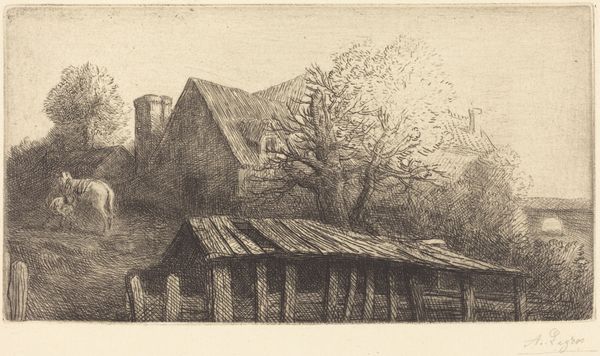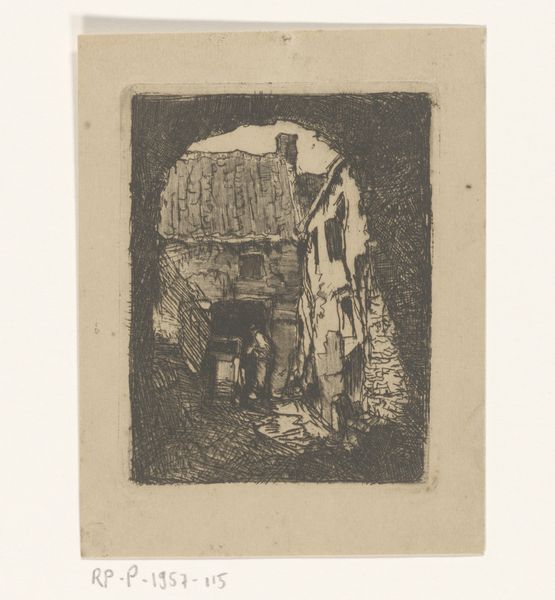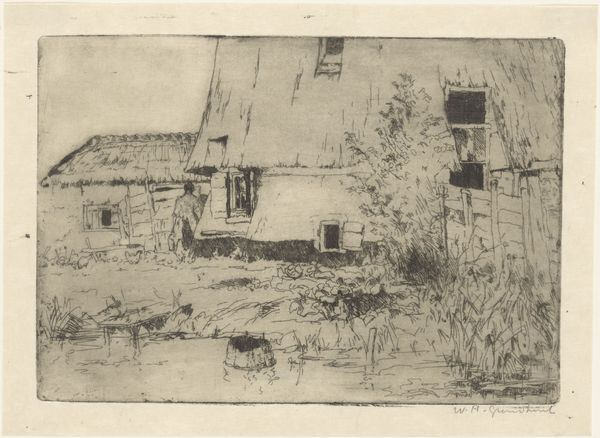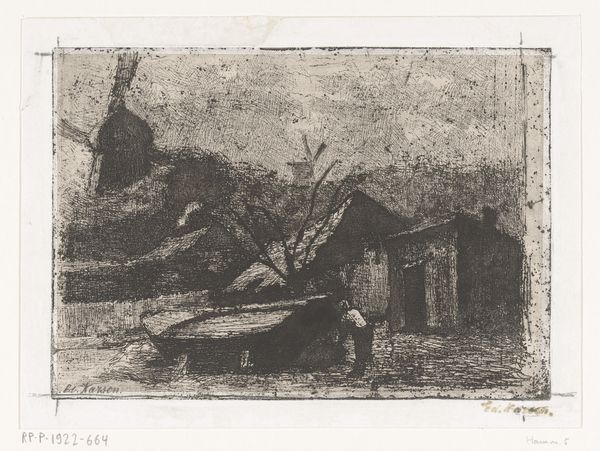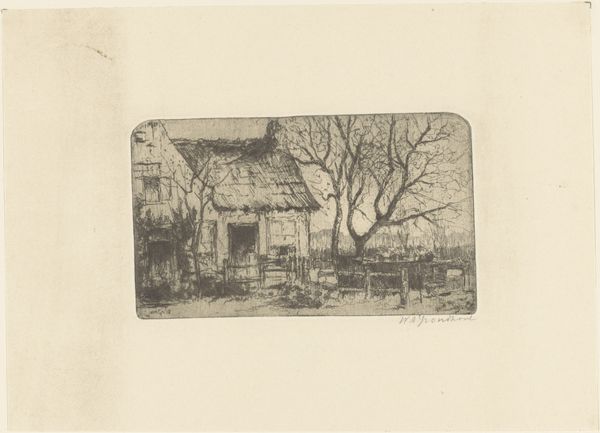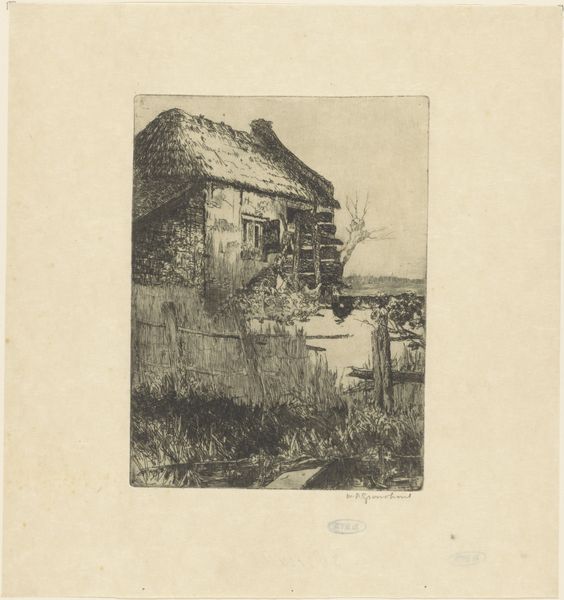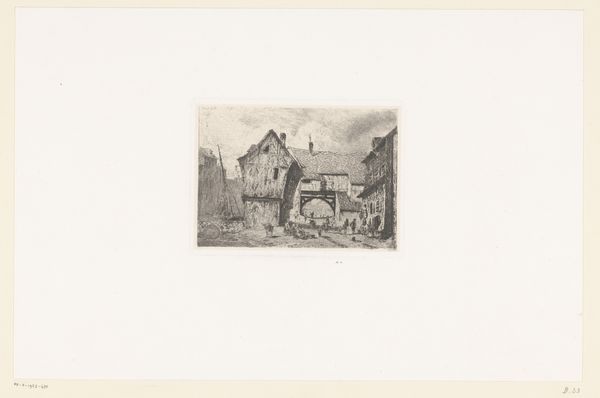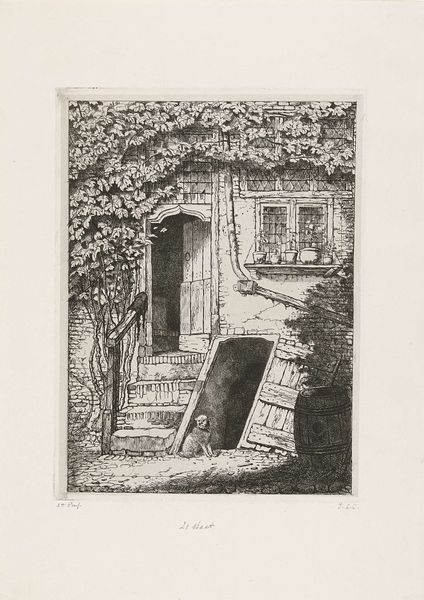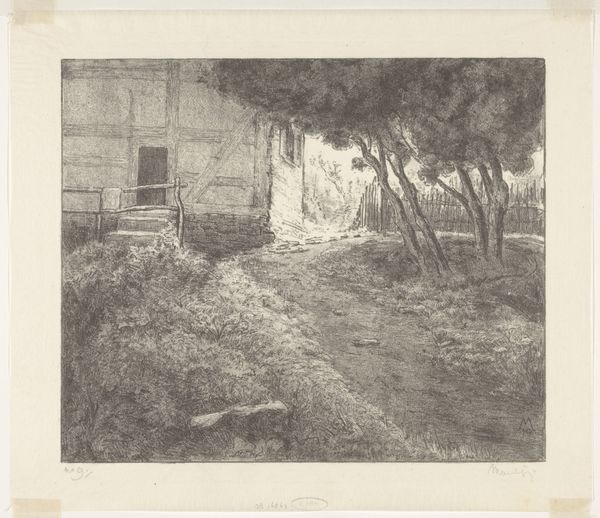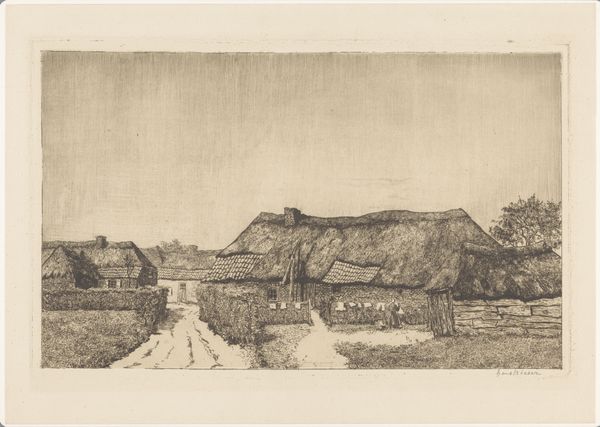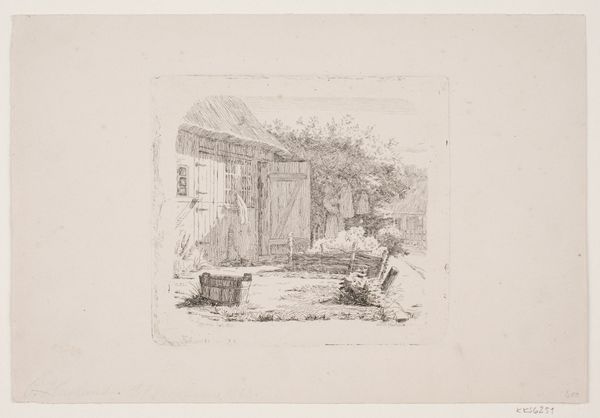
print, etching
# print
#
etching
#
landscape
#
genre-painting
#
realism
Dimensions: height 47 mm, width 85 mm
Copyright: Rijks Museum: Open Domain
Curator: Let's turn our attention to "Waterput bij een muur" or "Well by a Wall", an etching by Jacobus Hermanus Otterbeek, made sometime between 1854 and 1902. It depicts, unsurprisingly, a well house nestled against a weathered stone wall. What springs to mind for you? Editor: The silence. It feels starkly quiet here. The scene, in all its simple composition, evokes an intense feeling of loneliness. The thatched roof seems like it's sighing under the weight of who-knows-what kind of weary tale. Curator: That solitude definitely resonates. And when we consider the printmaking process Otterbeek used, etching, a somewhat laborious and indirect method of creating an image. Each line is bitten into the metal with acid, it emphasizes a removal, rather than addition of medium. Editor: Absolutely! Thinking about the physical effort—the resistant ground, the deliberate acid baths—infuses it with the slow, persistent labor that the well itself implies. Each mark speaks volumes about craft and the making-of! You get this sense of honest, rural life captured so simply. It feels timeless. Curator: Otterbeek's realism anchors the scene firmly in his contemporary world, the textures, the shadows… there is so much detail in capturing these mundane, daily structures! The attention given elevates the work from a simple rendering to, dare I say, something deeply evocative. But how does genre painting function here? It’s an everyday thing to get water. Editor: Because that water matters! Who dug that well? Who laid those stones? The function is about more than liquid consumption: labor, trade, even architectural knowledge all contributed to this very place we see. It all combines here to produce social relations through the means of production. Curator: Hmm. Perhaps a tad utopian. It gives us a tangible, touchable echo from the past. To reflect that an everyday scene, rendered through deliberate, painstaking methods can open dialogues not only around craft, but experience as well as simply *being* human. Editor: Perhaps. I simply ask myself what made that particular image appear and materialize, because that tells the truest story. Thanks to Otterbeek we both can keep digging further and deeper.
Comments
No comments
Be the first to comment and join the conversation on the ultimate creative platform.

